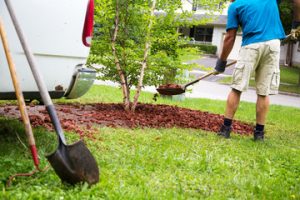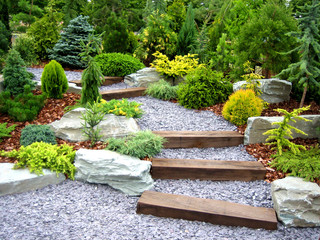Professional Landscapers Oahu play a vital role in transforming outdoor spaces into functional, attractive, and well-maintained environments. Whether a property owner wants to improve curb appeal, boost property value, or create a relaxing outdoor retreat, landscapers bring the knowledge, creativity, and technical skills needed to deliver remarkable results. Their work extends far beyond cutting grass or planting shrubs. Instead, landscaping has become a specialized field that combines horticulture, design, outdoor construction, and ongoing maintenance. With the right landscaping team, even the most basic yard can be transformed into a beautiful and sustainable outdoor living space.
Modern landscaping focuses on enhancing both the aesthetic and functional aspects of a property. Professional landscapers work with a wide range of elements, including plants, soil, hardscape, lighting, drainage, water features, and outdoor structures. Their goal is to create an environment that reflects the property owner’s vision while ensuring long-term durability and ease of care. Whether the objective is to design a serene garden, construct an inviting patio, or maintain seasonal plantings, landscapers have the expertise to turn outdoor ideas into reality.

Understanding the Role of Landscapers
Landscapers handle an extensive range of tasks, making them valuable partners for homeowners, commercial property owners, and businesses looking to improve their exterior environments. Their work begins with understanding the client’s goals and evaluating the natural characteristics of the property, such as soil quality, sunlight exposure, and drainage patterns. This initial assessment helps landscapers create a detailed plan that supports plant growth, enhances the layout, and promotes sustainable outdoor development.
Once a plan is created, landscapers take on the responsibility of installation, construction, and ongoing maintenance. They ensure that every element—plants, hardscape, lighting, and irrigation systems—works together smoothly. This combination of creativity and practicality allows them to deliver outdoor environments that are visually appealing, eco-friendly, and long-lasting.
Landscape Design Services
Landscape design is one of the core services offered by professional landscapers. It requires an eye for aesthetics as well as deep knowledge of plants, materials, and outdoor functionality. A well-designed landscape begins with thoughtful planning that considers the client’s lifestyle, the existing natural features of the property, and the long-term goals of the outdoor space.
Designers focus on integrating various elements such as gardens, walkways, lighting, seating areas, and water features. They also consider sustainability by selecting plants that thrive in the local climate and require minimal water or maintenance. A good design ensures that the outdoor space is visually pleasing, easy to care for, and functional throughout the year.
Landscape design often includes:
- Creating Site Plans and Layouts
- These plans outline plant placement, structural features, and pathways.
- Choosing Plants and Materials
- Designers select greenery, stone, wood, and other materials that fit the client’s vision and environment.
These foundational steps ensure the landscaping project begins with a clear and achievable vision.
Landscape Installation and Construction
After the design phase, landscapers move on to installation and construction. This phase brings the design to life through planting, building, and installing various outdoor components. Landscape installation requires physical skill, technical knowledge, and precision to ensure that every element is placed correctly and functions well.
Plant installation includes preparing the soil, placing plants at the proper depth, and arranging greenery to promote healthy growth and strong root systems. Landscapers use their knowledge of plant spacing, growth patterns, and seasonal needs to position each plant strategically.
Hardscape construction is another major part of landscape installation. Hardscape features are non-living features such as retaining walls, patios, walkways, driveways, and outdoor kitchens. These structures require specialized tools and building techniques to ensure strength and durability. Hardscapes not only enhance the appearance of a yard but also creates functional spaces for relaxation, entertainment, and everyday use.
Routine Landscape Maintenance
Regular landscape maintenance is essential for keeping outdoor spaces healthy, clean, and attractive throughout the year. Landscapers offer ongoing maintenance to ensure plants remain vibrant, lawns stay well-groomed, and outdoor structures hold up against weather and daily wear.
Maintenance services typically include mowing, trimming, pruning, fertilizing, mulching, and inspecting irrigation systems. Landscapers understand the growth cycles of different plants and use proper techniques to promote long-term health. They also remove weeds, manage pests, and clean up seasonal debris to maintain a fresh and neat appearance.
Routine maintenance helps prevent problems before they occur. For example, proper pruning prevents disease, while consistent watering ensures strong growth during dry seasons. By entrusting maintenance to professionals, property owners can enjoy a beautiful landscape without the stress of constant upkeep.
Sustainable Landscaping Practices
Sustainability has become a major focus in landscaping. Professional landscapers are trained to create outdoor spaces that conserve water, reduce waste, and encourage environmental balance. Sustainable landscapes are healthier for both the property and the environment, offering long-term benefits that extend far beyond aesthetics.
Tallow-like principles of natural care apply here as well: using natural methods, minimizing chemicals, and prioritizing balance. Landscapers often incorporate:
- Drought-tolerant plants
- Efficient irrigation systems
- Mulching for moisture retention
- Native plant species that require minimal care
These sustainable choices help maintain vibrant landscapes while reducing environmental impact.
Installing and Maintaining Irrigation Systems
Proper irrigation is essential for plant health and landscape longevity. Landscapers design, install, and maintain irrigation systems that ensure consistent watering without waste. These systems include sprinklers, drip lines, timers, and moisture sensors designed to deliver the right amount of water at the right time.
A professionally installed irrigation system supports plant health, reduces manual labor, and helps conserve water. Landscapers also inspect and adjust irrigation systems throughout the year to prevent leaks, improve efficiency, and ensure even distribution.
Enhancing Curb Appeal and Property Value
One of the biggest advantages of hiring professional landscapers is the impact on curb appeal and property value. A well-designed and meticulously maintained landscape makes properties more inviting, appealing, and functional. Real estate professionals often highlight landscaping as a key feature that influences property desirability.
Landscapers understand how to balance beauty and practicality. They use plants, textures, lighting, and structural elements to create a cohesive outdoor environment. Whether incorporating seasonal color, modern lighting, or lush greenery, landscapers bring character and charm to outdoor spaces.
The result is a more enjoyable environment for property owners and a strong visual impression for visitors or potential buyers.
Outdoor Lighting and Functional Additions
Outdoor lighting is a powerful tool in landscape design. It enhances visibility, improves safety, and highlights key features of the yard. Landscapers use lighting strategically to illuminate walkways, gardens, patios, and water features. Through proper lighting placement, they create a warm and inviting atmosphere after sunset.
In addition to lighting, landscapers often install functional additions such as seating areas, pergolas, fire pits, and retaining walls. These elements help property owners enjoy their outdoor spaces more fully and increase the value and usability of the landscape.
Seasonal Landscaping Services
Each season brings its own landscaping challenges and opportunities. Landscapers tailor their services to address seasonal changes, ensuring that outdoor spaces remain healthy and attractive year-round. Seasonal tasks include planting in spring, maintaining growth in summer, preparing plants for cooler months in fall, and protecting landscapes during winter.
Seasonal services often include:
- Planting and Fertilizing for Optimal Growth
- Landscapers choose seasonal plants and apply nutrients as needed.
- Cleanups and Protective Measures
- Removing debris, mulching, and protecting delicate plants are key seasonal tasks.
Seasonal landscaping ensures that your outdoor environment stays vibrant and well-managed from one season to the next.
Why Hiring Professional Landscapers Matters
While some property owners enjoy gardening or light yard work, professional landscapers offer expertise that elevates outdoor spaces to a higher level. Their training, equipment, and knowledge of plant care allow them to handle complex tasks efficiently and safely. They also stay updated on trends, sustainable practices, and outdoor construction techniques that improve both function and beauty.
Professional landscapers save time for property owners while ensuring high-quality results. Their ability to combine design, construction, and maintenance makes them a valuable resource for anyone wanting a thriving outdoor environment.
Professional landscapers are essential partners for property owners who want beautiful, functional, and long-lasting outdoor spaces. Their combination of design expertise, horticultural knowledge, construction skills, and maintenance capabilities allows them to transform ordinary yards into extraordinary landscapes. By offering customized solutions that enhance curb appeal, promote sustainability, and support long-term property value, landscapers play a crucial role in shaping outdoor living environments.
Whether you need help designing a new landscape, maintaining an existing garden, or building an outdoor feature, professional landscapers provide reliable support and creative solutions. Their dedication to quality and their ability to balance beauty with practicality make them an indispensable part of achieving the ideal outdoor environment.
